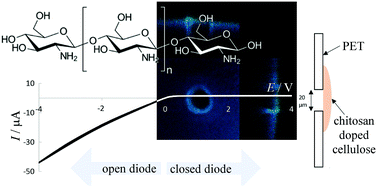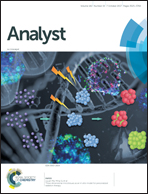Cellulose ionics: switching ionic diode responses by surface charge in reconstituted cellulose films
Abstract
Cellulose films as well as chitosan-modified cellulose films of approximately 5 μm thickness, reconstituted from ionic liquid media onto a poly(ethylene-terephthalate) (PET, 6 μm thickness) film with a 5, 10, 20, or 40 μm diameter laser-drilled microhole, show significant current rectification in aqueous NaCl. Reconstituted α-cellulose films provide “cationic diodes” (due to predominant cation conductivity) whereas chitosan-doped cellulose shows “anionic diode” effects (due to predominant anion conductivity). The current rectification, or “ionic diode” behaviour, is investigated as a function of NaCl concentration, pH, microhole diameter, and molecular weight of the chitosan dopant. Future applications are envisaged exploiting the surface charge induced switching of diode currents for signal amplification in sensing.

- This article is part of the themed collections: Analyst Recent Open Access Articles and SBQ-RSC: Celebrating UK-Brazil collaborations


 Please wait while we load your content...
Please wait while we load your content...